Observing the Sun in Hydrogen Alpha
By: Brian Ventrudo and Manish PanjwaniDiscuss this article in the forums
August 17, 2016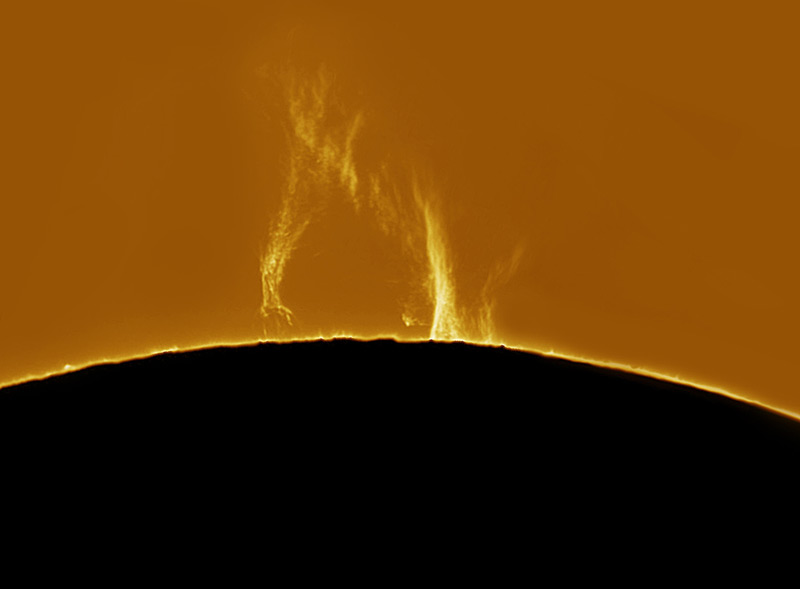 Fig. 1: A solar prominence imaged at the wavelength of H-alpha (credit: Sergio Castillo).In the last article in this series, you learned the ins and outs of hydrogen-alpha solar filters. These devices pass only a narrow band of light at 656.3 nm, in the red-orange part of the spectrum, while blocking the brilliant white light from the Sun's photosphere. In a telescope with a hydrogen-alpha solar filter you primarily see the structures and formations in the Sun's chromosphere, the tenuous region just above the photosphere. In this article, you learn more about the sights in the chromosphere that show in vivid detail the beauty and power of our home star.
Fig. 1: A solar prominence imaged at the wavelength of H-alpha (credit: Sergio Castillo).In the last article in this series, you learned the ins and outs of hydrogen-alpha solar filters. These devices pass only a narrow band of light at 656.3 nm, in the red-orange part of the spectrum, while blocking the brilliant white light from the Sun's photosphere. In a telescope with a hydrogen-alpha solar filter you primarily see the structures and formations in the Sun's chromosphere, the tenuous region just above the photosphere. In this article, you learn more about the sights in the chromosphere that show in vivid detail the beauty and power of our home star.6.1 Prominences and Filaments
Prominences are dense clouds of gas and charged particles suspended above the photosphere of the Sun by magnetic field loops. With a telescope and H-alpha filter, a prominence looks like a curved flame emerging from the edge of the Sun. Like sunspots, prominences come together over several days and remain suspended over the sun for many more days. But they don't last forever. As the solar magnetic field moves around, the hot plasma in a prominence becomes unstable and falls back into the Sun.
The arcs of plasma in a solar prominence are many times the size of our Earth.
 Fig. 2: A series of solar prominences suspended over the limb of the Sun (credit: Sergio Castillo).
Fig. 2: A series of solar prominences suspended over the limb of the Sun (credit: Sergio Castillo).Solar prominences, by definition, are visible along the edge of the Sun. If you see a prominence in the central part of the Sun facing the Earth it's called a filament. So a filament is simply a prominence seen from above from our point of view.They appear as dark rope-like structures etched into the face of the Sun. They also can last for many days before they fade from view.
Both filaments and prominences are only visible at H-alpha wavelengths. If you only have a white-light solar filter, you won't see these structures because the brilliance of the Sun's photosphere washes out their delicate light.
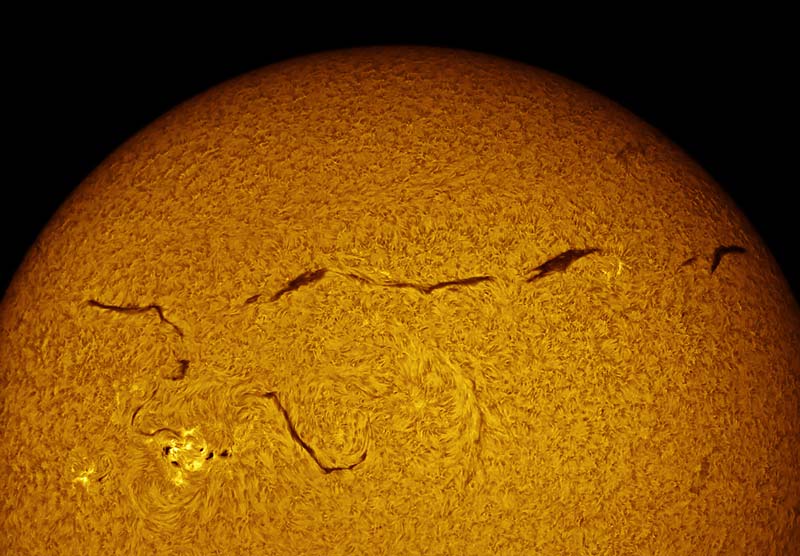 Fig. 3: Solar filaments are simply prominences seen from above rather than from the side (credit: Sergio Castillo).
Fig. 3: Solar filaments are simply prominences seen from above rather than from the side (credit: Sergio Castillo).6.2 Plages
A plage is a bright patch visible in H-alpha surrounding a sunspot. Sunspots themselves are not as conspicuous at this wavelength because you're looking higher up in the chromosphere rather than into the photosphere where sunspots take root. Plages also seem to be associated and coincident with faculae in the photosphere, though it's not clear how they are related, and faculae are visible mostly in white light.
 Fig. 4: A solar plage (credit: Sergio Castillo).
Fig. 4: A solar plage (credit: Sergio Castillo).6.3 Ellerman Bombs
Ellerman bombs are another feature associated with sunspots. They are small, bright structures that form in anactive solar region, usuallya region of emerging magnetic flux ora region on the edge of a sunspot where the magnetic field is breaking through the photosphere. Ellerman bombs are challenging to see. They usually last less than 5 minutes before they quickly fade. They are best seen in H-alpha by tuning the filter slightly off the center of the H-alpha wavelength. These features are named after the American astronomer Ferdinand Ellerman. They are sometimes called a Severny moustache.
6.4 Flares
Solar flares are gigantic releases of energy from the Sun. They only last for a few minutes to approximately an hour and can release the equivalent energy of millions of hydrogen bombs. The energy is blasted into space as gamma rays, X-rays, protons, and electrons, and visible light.
Solar flares occur near sunspots at the regions between magnetic fields of opposite polarities. They occur in three stages. First comes the precursor stage, during which X-rays are released. In the second stage, protons and electrons are accelerated and radio waves, hard x-rays, and gamma rays are emitted. The gradual build up and decay of soft x-rays can be detected in the third 'decay' stage. When flares occur near the limb of the Sun, it's possible to see hot material ejected into space like a giant flame pushing outward. On the face of the Sun, a flare can appear as a sudden brightening of a small region on the visible surface in H-alpha and in white light. They are easier to see in H-alpha, but very bright flares can be seen in the photosphere with a white-light filter as a sudden increase in brightness near a sunspot.
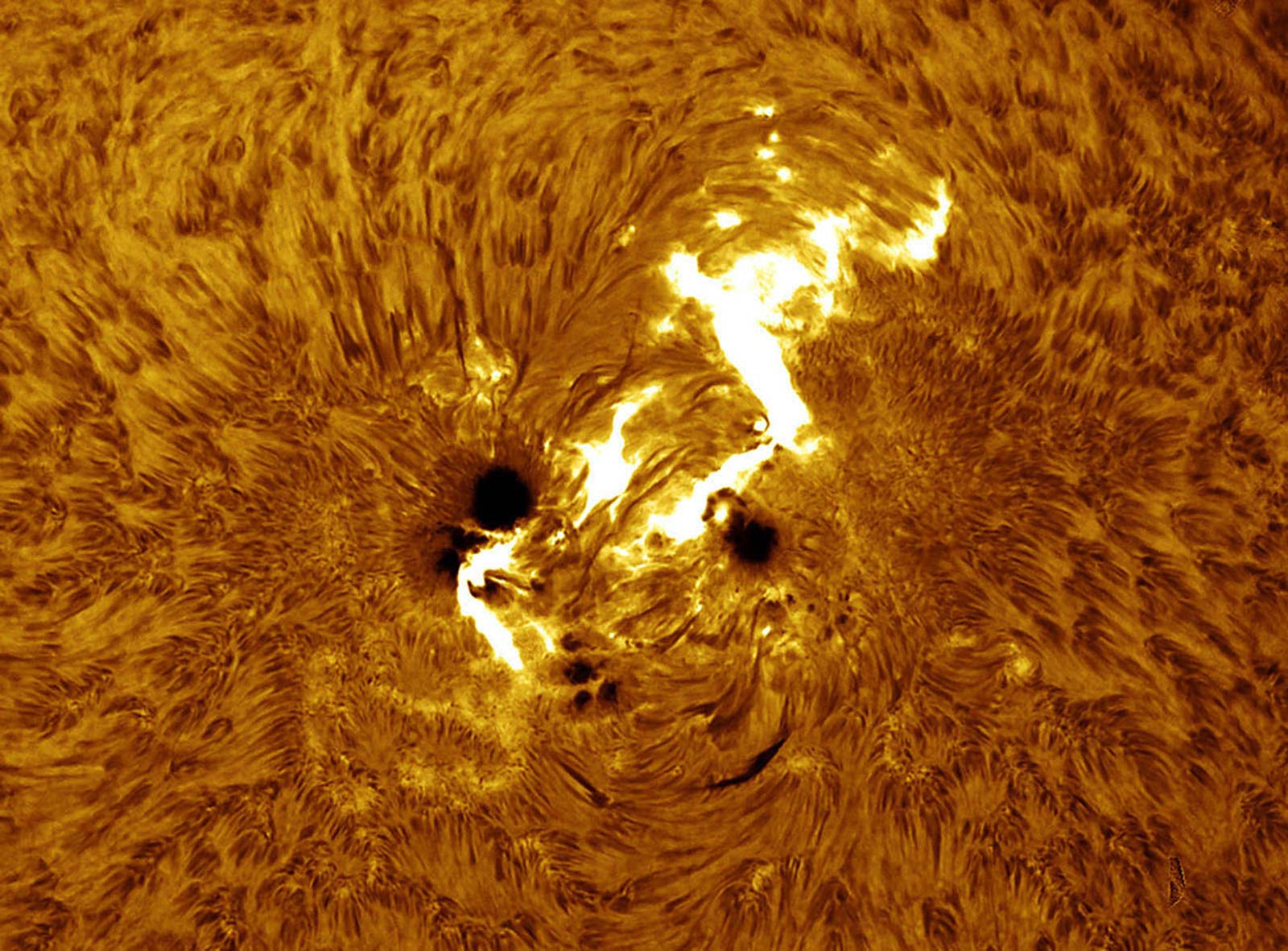 Fig. 5: A solar flare erupts near a sunspot as imaged in H-alpha (credit: Sergio Castillo).
Fig. 5: A solar flare erupts near a sunspot as imaged in H-alpha (credit: Sergio Castillo).Solar flares are not uncommon, and the frequency at which they occur is related directly to the sunspot cycle. But seeing a solar flare as it happens, either in white light or H-alpha, requires some good luck because they are so fleeting. Looking close-up at higher magnification at a sunspot group gives you far better chance of seeing a solar flare in the act.
Flares that release energy and particles towards Earth are of particular interest to astronomers and satellite and power-grid engineers. The visible light, X-rays, and gamma rays arrive at the speed of light just eight minutes after the flare erupts. The high-energy charged particles travel much slower and arrive at Earth a few days later. These particles interact with the Earth's magnetic field and atmosphere, causing bright and widespread auroral displays, damaging surges and outages in terrestrial power systems, damage to the electronics of satellites, and potentially mortal danger to in flight astronauts. For these reasons, NASA and the National Oceanic and Atmospheric Administration (NOAA) in the United States monitor solar flare activity closely.
Astronomers classify flares according to their energy output. The most powerful flares are called "X-Class". M-Class flares have a tenth the energy of X-Class, and C-Class flares have a tenth of energy of M-Class flares.
6.5 Chromospheric Network
The chromospheric network is a web-like pattern that's most easily seen visuallywith ahydrogen-alpha filter. The network outlines the larger "supergranule" cells, which are larger cells of material containing thousands of smaller granules. This feature is brighter and therefore hotter than the rest of the chromosphere. The extra heat comes from the motion of hot gas concentrated by magnetic field lines in the supergranules. The visibility of the network varies, so look for it each time you observe the Sun with an H-alpha filter.
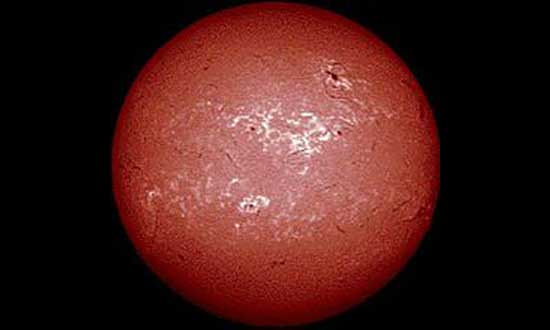 Fig. 6: The bright outline of the solar chromospheric network imaged in H-alpha (credit: NASA).
Fig. 6: The bright outline of the solar chromospheric network imaged in H-alpha (credit: NASA).6.6 Spicules
Spicules are small short-lived jets of material that move directly upward from the Sun's surface. They are also caused by magnetic activity and rise at speeds of 20 km/s to heights of several thousand kilometers. After 15 minutes or so, they collapse and fade.
Spicules have a diameter of about 500 km. There are many tens of thousands of spicules on the Sun at any one time.
Because of their small size, high magnification is required to spot these strange little eruptions along the limb of the Sun. They look like blades of orange grass.
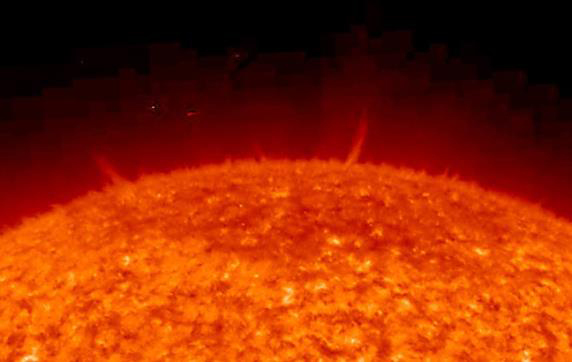 Fig. 7: Spicules at the edge of the Sun imaged in H-alpha (credit: NASA).
Fig. 7: Spicules at the edge of the Sun imaged in H-alpha (credit: NASA). About the Author
About the Author
Brian Ventrudo is a writer, scientist, and astronomy educator. He received his first telescope at the age of 5 and completed his first university course in astronomy at the age of 12, eventually receiving a master's degree in the subject. He also holds a Ph.D. in engineering physics from McMaster University. During a twenty-year scientific career, he developed laser systems to detect molecules found in interstellar space and planetary atmospheres, and leveraged his expertise to create laser technology for optical communications networks. Since 2008, Brian has taught astronomy to tens of thousands of stargazers through his websites OneMinuteAstronomer.com and CosmicPursuits.com.
 About the Author
About the Author
Manish Panjwani has been an active amateur astronomer since before Halley's Comet last flew by our neighborhood. A former wireless communications consulting engineer and management consultant to various Fortune 500 companies, Manish started Agena AstroProducts in 2003. Since then, Agena has become one of the leading online retailers of telescopes and astronomical accessories worldwide. Besides observing from his heavily light polluted backyard in Los Angeles, Manish enjoys conducting astronomy outreach programs in local schools. Manish also holds a Master's degree in Electrical Engineering from Virginia Tech and an MBA from the Kellogg School of Management at Northwestern University.
***
This article is © AstronomyConnect 2016. All rights reserved.
-
Final Announcement: We're Saying Goodbye to AstronomyConnect. Read Our Closing Notice.
Dismiss Notice
New Cookie Policy
On May 24, 2018, we published revised versions of our Terms and Rules and Cookie Policy. Your use of AstronomyConnect.com’s services is subject to these revised terms.

